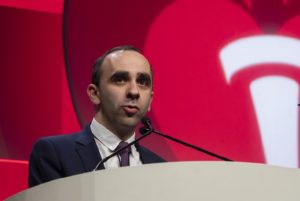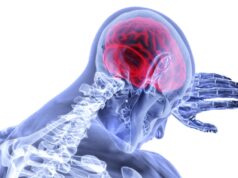
Treatment with tranexamic acid, a common medication that reduces bleeding, has led to a non-statistically significant reduction in intracerebral haemorrhage (ICH) growth, both in binary and absolute terms, according to data from the STOP-AUST trial presented during the late-breaking session at the International Stroke Conference (ISC; 19–21 February, Los Angeles, USA).
Discussing STOP-AUST (Spot sign and tranexamic acid on preventing ICH growth—Australasia trial) at the meeting, Nawaf Yassi, Royal Melbourne Hospital, Melbourne, Australia, told delegates that the overall prevalence of ICH growth (48%) was higher in this <4.5 spot-sign selected trial compared to other trials, such as TICH-2 (27%), while he also noted: “Our work and others have shown that tranexamic acid is safe in primary ICH.”
“Unfortunately, compared to ischaemic stroke, treatments for ICH are extremely limited,” Yassi said, speaking on the rationale behind the research. He added that ICH is estimated to affect 2 million people globally every year, with some reports of mortality up to 40% in the first 30 days.
One of the most consistent predictive factors for poor outcome after ICH, according to Yassi, is haematoma expansion. Haemostatic therapies have thus been identified as potential treatments for this condition. “One of these agents is recombinant factor VIIIa [rFVIIIa], which has been shown in phase II and phase III trials, to reduce haematoma growth. But unfortunately this has not translated to improved outcomes and has been associated with increased thromboembolic events.”
Alluding to a meta-analysis of the SPOTLIGHT and STOP-IT trials, Yassi said rFVIIIa in spot-sign positive ICH patients did not significantly reduce ICH growth, although growth was small in both groups.
“We have been interested in tranexamic acid for some time. It is an antifibrinolyic agent with several attractive features. It is a reversible direct inhibitor of plasminogen lysine binding sites, and prevents the activation of plasmin and degradation of fibrin,” Yassi enthused. He added that its pharmacokinetic profile (its excreted unchanged in urine with 90% clearance in 24 hour) is favourable, and that the mediation crosses the blood-brain barrier, has no relevant interactions, and remains inexpensive.
STOP-AUST was a phase II investigator-initiated, randomised, double-blind, placebo-controlled trial or tranexamic acid in spot sign positive patients within 4.5 hours of ICH. From March 2013 to August 2019, 100 patients were recruited from 13 centres in Australia, Taiwan and Finland. It was hypothesised that these ICH patients with CTA “spot sign” will have lower rates of haematoma growth when treated with intravenous tranexamic acid within 4.5 hours of stroke onset compared to placebo. The primary endpoint was growth of the haematoma between the base CT scan and a CT scan at 24 hours, and the functional outcome was assessed at 90 days.
“The baseline demographics were fairly typical of an ICH cohort”, Yassi said. “The onset to imaging time was approximately 1.5 hours in both groups, and we managed to deliver treatment at a median time of approximately 50 minutes after the baseline CT, resulting in an onset to treatment time of around 2.5 hours.”
Findings and future directions
Yassi highlighted that ICH growth (33% relative growth or 6mL absolute growth) occurred in 44% of the tranexamic acid group, compared to 52% of the placebo, which is an absolute risk reduction of 8%, but was not statistically significant.
In terms of secondary outcomes, the absolute growth of the haematoma was 1.9mL in the tranexamic group, compared to a median of 3.4 for placebo. There was no difference in intraventricular growth, or modified Rankin Scale scores.
Major thromboembolic events occurred in one patient in the tranexamic acid group, and in two patients in the placebo group, and there was no significant differences in this outcome, or in death within 90 days (13 vs. 8 patients, respectively), Yassi reported.
In a post-hoc analysis, the investigators identified that the strongest trends towards reduction of haematoma growth were in those treated earliest, particularly in those treated in the ≤3hour and the ≤2hour window. These results led Yassi and his co-investigators to conclude that further exploration of tranexamic acid therapy in the ultra-early time window is warranted. Yassi confirmed: “We are doing this at present in the STOP-MSU [Stopping haemorrhage with tranexamic acid hyperacute onset presentation including mobile stroke units] trial in mobile stroke units and emergency departments across Australasia.”













